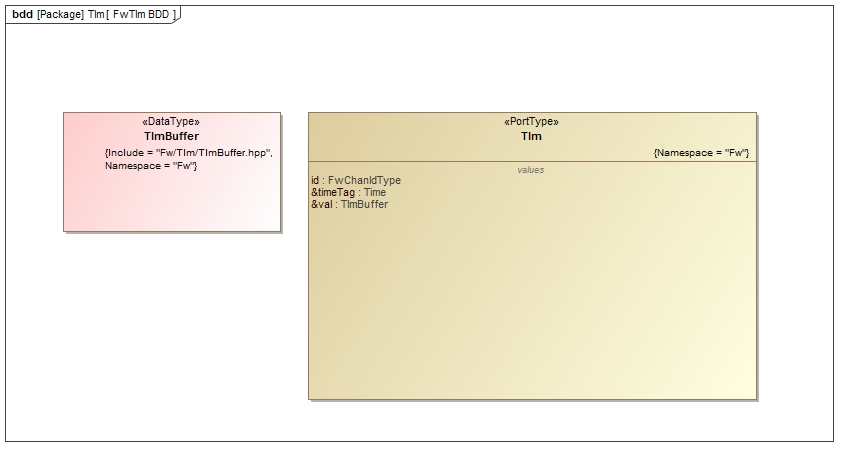 |
F´ Flight Software - C/C++ Documentation
devel
A framework for building embedded system applications to NASA flight quality standards.
|
 |
F´ Flight Software - C/C++ Documentation
devel
A framework for building embedded system applications to NASA flight quality standards.
|
The Fw::Tlm port is used to pass a serialized telemetry value. It also passes the telemetry channel IS as well a time tag representing the time the channel was written.
The Fw::Tlm port has the following port diagram:

The Fw::TlmBuffer class contains a buffer that holds the serialized value of a telemetry channel. This buffer is passed as an argument to the Fw::Tlm port.
The Fw::TlmPacket class is a packet class derived from `Fw::ComPacket` that provides methods for encoding a telemetry packet. It contains an internal Fw:ComBuffer that holds serialized channel values.
To fill a packet with telemetry values, do the following:
1. Instantiate an instance of the TlmPacket class.
2. Invoke the resetPktSer() method to start adding telemetry values. This method will empty the buffer and add the channel descriptor to the beginning.
3. Call the addValue() method with new entries until all entries are added or until the method returns the Fw::FW_SERIALIZE_NO_ROOM_LEFT status. That means that the buffer is full and the new entry was not added.
4. Extract the ComBuffer with the getBuffer() method and send it to the ground system.
5. Repeat steps 2-4 for additional channel values, not forgetting to include one potentially rejected in step 3.
The layout of the internal ComBuffer is as follows:
|Telemetry Packet Descriptor|Chan 1 ID|Chan 1 timestamp|Chan 1 Value|....|Chan N ID|Chan N timestamp|Chan N Value|Left over buffer space| |—|—|—|—|—|—|—|-—|—|
To extract telemetry values from a packet, do the following:
1. Instantiate an instance of the TlmPacket class.
2. Pass it the serialized channel ComBuffer data via the setBuffer() method.
3. Call the resetPktDeser() method to start extracting data from the buffer. This will extract the packet descriptor and verify that it matches the one for telemetry.
4. For each telemetry entry in the packet, invoke the extractValue() method. Note that the users must know the size of the telemetry value (hence the bufferSize argument) since the buffer does not contain information on the boundaries of values.
5. Repeat steps 2-4 for any additional channels. The extractValue() method will return Fw::FW_DESERIALIZE_BUFFER_EMPTY when there is no more channel data in the buffer.
| Date | Description |
|---|---|
| 6/23/2015 | Initial Version |
| 6/23/2022 | Updated implementation to hold multiple channel entries |